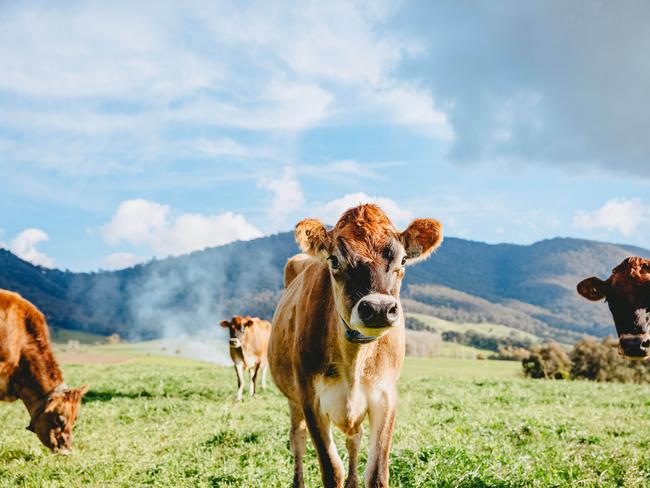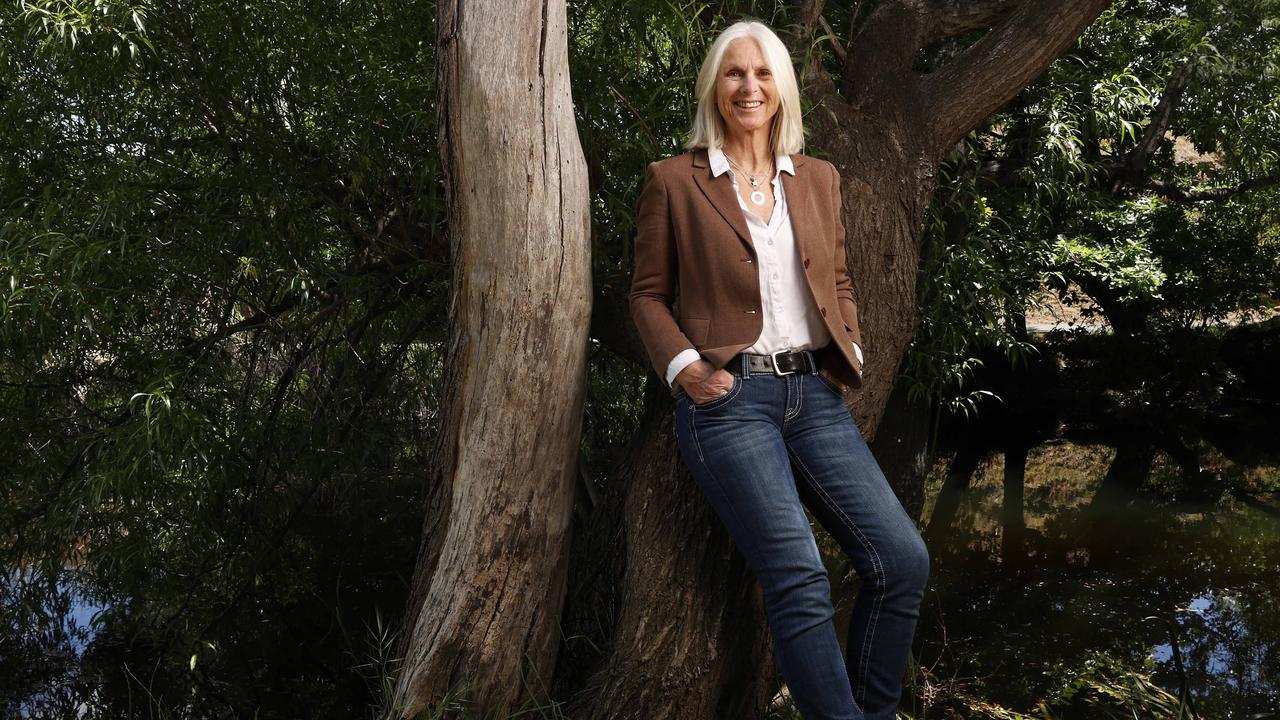Australian dairy boom: Farmers call for their fair share
Lockdowns have sparked a dairy-buying frenzy among Australian consumers, but changes need to be made so farmers can reap the rewards.

The Weekly Times
Don't miss out on the headlines from The Weekly Times. Followed categories will be added to My News.
Australians are devouring dairy produce in robust numbers — but are farmers getting a better butter deal?
Retail figures from supermarket refrigerators are certainly impressive.
The most recent data from Dairy Australia show shoppers nationwide made their way through 1.5 billion litres of milk in the past year — an 11 per cent jump in 2020 compared to the previous 12 months to sit at a take-home figure of $2.67 billion.
The growth in cheese sales was even more impressive. Australians ate their way through 169,000 tonnes of cheddar, feta and other cheese varieties during the 2020 calendar year.
Take-home cheese sales were up 17.5 per cent in 2020 compared to the previous 12 months, to an overall dollar figure of more than $2.4 billion.

At an Australian Dairy Conference forum earlier this year, processors chiefs including Fonterra Australia managing director Rene Dedoncker, said the strong 2020 sales were mainly a result of increased home cooking during lockdown.
“When we eat at home we eat more protein; we certainly eat more dairy,” Mr Dedoncker said. “There’s no doubt about it — whether you’ve got a double layer of butter on your scones … but I can tell you that we are using more (dairy).”
Bega Cheese chairman Barry Irvin said his company noticed shoppers snapped up more dairy during lockdown, but other food brands under the Bega name also performed well with more meals consumed at the kitchen table.
“In a time of insecurity, people wanted (to buy) things they were familiar with, things they were secure with and that obviously helped businesses such as (Bega),” he said.
“That trend is not unique to Australia. We’ve seen that trend around the globe.”
So are dairy farmers getting a fair share of the jump in sales?
Well, the answer is complicated.
United Dairyfarmers of Victoria president Paul Mumford has led the charge over the past 18 months for farmers to get a fairer share of the dairy-profit pie.
Throughout the 2020-21 season, he called for step-ups to the farmgate price paid to suppliers as the international market soared – skim milk powder prices have rocketed from around $US2500 a tonne at the start of the pandemic in March last year to trading around $US3400. Whole milk powder and butter prices have also shot up.
“We’re finally seeing prices that reflect not only the international market but the time and resources that go into producing milk,” Mr Mumford said. “I’ve said many times: Farmers are tired. They work hours that don’t compare to most (other jobs) and like everyone, they expect a reasonable return for their efforts.”
The 2016 clawback at the farmgate by Murray Goulburn and Fonterra has left a deep scar on the Victorian dairy sector.

One in four Victorian dairy farmers have permanently left the milking shed in the past five years, with farmer numbers plummeting from 4141 at the time of the clawback to 3069 today.
“The prices we saw in 2020-21 were good. What we’re seeing in 2021-22 is even better,” Mr Mumford said. “But following on from the 2016 clawback, there were several ordinary seasons. Some farmers left dairy then, some are now deciding to go out on a high. Plenty more will keep at it now that there’s stability.
“What we need in dairy is price stability. That farmers are given the confidence to plan ahead, invest and reinvest.”
Over in Western Australia, dairy farmers around the Perth region almost exclusively produce milk for the domestic market.
The lack of an export alternative has seen a similar exodus from the land and talk of radical changes to the way the sector operates.
WA agriculture Minister Alannah MacTiernan floated the idea of a “minimum wholesale price from retailers” during a speech to dairy farmers in August.
WAFarmers dairy council president Ian Noakes said while 2021-22 was shaping up to be a better season than most seen throughout the 2010s, prices needed to be higher.
“When it comes to a farmgate price, the average WA dairy farmer is getting in the low 50s at the moment – 52, 53, 54, sometimes 55 cents a litre,” he said.
“Thankfully, we’ve seen input costs come back a little, so the margins are better than they were two years ago.”
Mr Noakes said consumers needed to pay more for their carton if they wanted freshly sourced milk into the 2020s.
“That’s a particular issue here in WA. The shopper in Perth is paying $1.44 a litre on average at the checkout while in the east it’s $1.51 a litre on average,” he said.
“That seven cents makes a big difference, particularly when you’re reliant on domestic sales for your survival.”
Queensland bore the brunt of the deregulation of the Australian dairy sector in the early 2000s. The Sunshine State still has its challenges but Queensland Dairyfarmers Organisation president Brian Tessmann said the sector had turned a corner.
Climatic conditions had been favourable, particularly in southeast Queensland, this season.
“Toowoomba really has been the dividing line when it comes to the weather. (Dairy farms) south of Toowoomba down to the NSW border have had a good season,” Mr Tessmann said.
“North of Toowoomba less so. Things have been up and down in the Atherton Tablelands too.
“But overall, you’d say this was one of the better seasons we’ve had in a while.”
A common element across Australia pulling farmers out of dairy hovers in plain sight over the property boundary fence.
Beef prices have been strong and heading into the 2021-22 financial year, they’re looking even better to the beleaguered dairy farmer.
“There’s no doubt beef looks attractive. Even with OK prices in dairy, beef has outpaced that. So that is certainly something that some dairy farmers look at, particularly if they’re thinking of early retirement,” Mr Tessmann said.
Originally published as Australian dairy boom: Farmers call for their fair share



